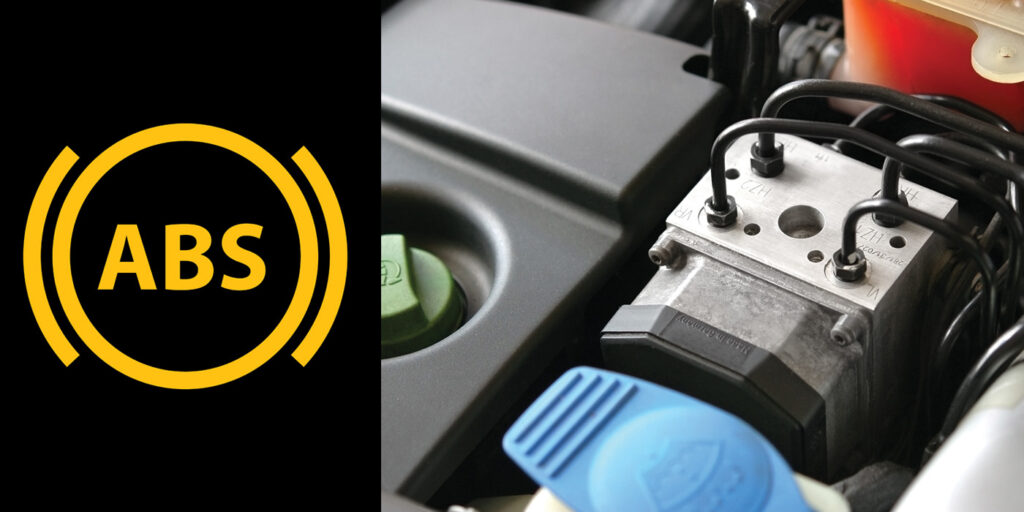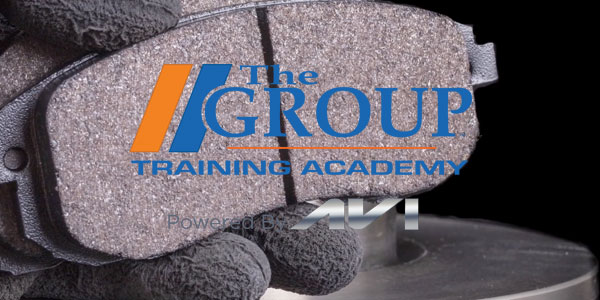Who remembers having your driving instructor tell you to “pump the brakes” when stopping on slippery roads? If you raised your hand, congratulations – you’re over the hill like me!
The purpose of pumping the brakes was to humanly perform what an ABS does. You apply the brakes just to the point where the tires begin to slip on the road surface, then release and reapply pressure as quickly as possible. You simply do this over and over again, all in a split second. And if it’s an emergency, you calmly steer around the danger as adrenaline rushes through your veins and your heart rate skyrockets. No problem, right?
Well, I think you can see the problem. And, what if one tire is on ice and the other isn’t? There goes the steering, and there’s no fancy footwork that can overcome that.
So, what was the solution? Antilock braking systems (ABS). When they were first developed, the intention was that a driver could maintain directional control of a vehicle under extreme braking (when a wheel locks up, steering control is lost). The fact that ABS stops a vehicle quicker in a straight line (though not an unexpected result) was just a bonus.
ABS Operation
ABS initially was a dedicated braking system, but the signals from the wheel-speed sensors (WSS) quickly proved useful for traction- and stability-control systems, and on some vehicles the signals also are utilized by the powertrain control module for other functions. It can seem complicated, but for the practicality of parts and service, we can leave that end of it to the engineers who design the systems.
Functionally, ABS is one of the easier systems to understand, and we can break it down into three main areas: the WSS, the ABS control module and the ABS modulator.
Each WSS generates a signal proportionate to wheel speed and sends that signal to the ABS control module. The WSS works in conjunction with a reluctor wheel, which is a toothed wheel that is fixed on a component rotating at wheel speed. This allows the WSS to generate a signal through electromagnetic or Hall-effect principles.
The ABS control module is the computer that monitors the WSS signals, decides what to do and when, and sends output commands to the ABS modulator.
The ABS modulator is the hydraulic unit of the ABS system that contains the ABS pump and valving. The regular state of the valves allows hydraulic pressure from the brake master cylinder to pass through for normal braking. If, during braking, the ABS control module receives a signal from one or more WSS that indicates a wheel is losing traction (locking up), it sends a signal to the ABS modulator, and the valve for that given wheel closes to prevent additional hydraulic pressure from being applied.
If the wheel continues to lose traction, the valve then will release the pressure on that given wheel. The pressure is released to prevent wheel lock-up, but the pressure must be reapplied immediately for proper braking and steering control. This is when the ABS pump turns on to create the necessary hydraulic pressure for this to happen. Not too bad so far, right?
ABS Repair and Diagnosis
When it comes to repair, the vast majority of the time, real-world ABS problems are caused by nothing more than the fact that one or more of the wheel-speed signals received by the ABS control module is incorrect. Depending on the nature of the errant signal, the ABS control module responds by either actuating ABS function when it is not required, or by storing a diagnostic trouble code (DTC) and turning on the ABS warning light.
Taking it one step further, the vast majority of errant wheel-speed signals are caused by either wiring issues such as a broken wire or resistance in a connector; a WSS that is not positioned properly to pick up the signal from the reluctor wheel; or, in some cases, a missing or damaged reluctor wheel. A WSS can go bad, of course, but it’s less common than a related mechanical or electrical issue that affects the ability of the sensor to get its signal to the ABS control module.
If you’re playing the role of technician and a customer is asking you to help with their self-diagnosis of an ABS issue, they’re not going to get anywhere without a scan tool. Luckily, there are some basic scan tools that have just the right functions. In the case of ABS, if you can view DTCs and wheel-speed data, you’re most likely going to have all you need. If there’s a DTC stored, this provides the initial information to begin diagnosis. For example, a DTC may be “RF wheel-speed sensor implausible signal.”
Wheel-speed data allows you to see the reported speed from each sensor. If everything is working correctly, you can watch the speed of each wheel as you slow down, and all four should read the same: 10, 9, 8, 7 … all the way down to zero, almost.
There’s a catch. For a long time, most wheel-speed sensors were considered “passive” sensors, which generated their own electrical signal when the vehicle was in motion. These sensors aren’t able to generate and send a signal below 3 or 4 mph, so seeing the reading drop off at low speeds is normal. But, when compared to the others, if one drops off earlier, then you have identified a problem area, and just need to determine why.
Whereas passive sensors generate their own signal, active sensors receive a reference voltage and work like a Hall-effect sensor, so they’re able to provide a wheel-speed reading all the way down to zero. This ability improves ABS performance at low speeds and has made them more common. Either way, wheel-speed data is the primary diagnostic focus for ABS systems.
Selling ABS Components
Scan Tools
If you stock basic scan tools and you offer one with ABS functions, borrow one and try it out. It’s fun to see the ABS data and see first-hand how you can relate it to ABS operation. Plus, when you’re talking to a customer, it gives you the upper hand in knowledge to sell them on one. It’s a good investment, because if they’re keeping and maintaining an older vehicle and there’s one problem now, there will be another down the road.
Electrical Repairs
Wiring problems are incredibly common, and it’s usually right down near the wheel. The ABS harness might have worn from age, but this isn’t too common. More often, something off the road has damaged it, or it wasn’t properly installed and rubbed against a wheel or other suspension component. The best practice is to always advise your customer to replace the sensor with a new harness (most sensors have an integrated harness that connects to the main harness just inside the wheel well). The reason is that any repair eventually will have an effect on circuit resistance, and like any computer-related circuit, even the slightest increase in resistance can cause a problem.
There always will be times when a customer will forego a sensor and opt for a repair, but this still is an opportunity to sell them the tools and supplies they might need – such as wire strippers/crimpers; extra wire; butt connectors; solder; a soldering gun; heat-shrink tubing; and electrical tape.
Using butt connectors to repair the harness is temporary at best. Although butt connectors are acceptable for some electrical repairs, in this case it introduces a rigid area into a harness that needs to flex due to suspension and steering movements. Each end of this rigid section is now more susceptible to breaking. The ideal repair – although still never considered “permanent” – is to solder a very small, short (approximately 1 mm) section of the wires, then seal the repair with heat-shrink tubing. The more precise you can be, the less rigidity you will introduce into the harness, and the longer it will last.
Wheel Bearings
Generally speaking, wheel bearings have nothing to do with ABS, but in some cases, the reluctor wheel is part of the wheel bearing. Some vehicles have press-in style wheel bearings that appear identical on both sides, but one side has a reluctor and one doesn’t. Pressing this style of wheel bearing in wrong is a common mistake, and with no reluctor wheel by the WSS, there is no way of generating a WSS signal.
Even on an older vehicle, when someone is replacing a wheel bearing, be sure to ask if it has ABS. It may or may not be relevant depending on the vehicle, but better to ask and avoid the potential for a problem. Along the same lines, if you sell a bearing that appears as if it could install either way and the vehicle has ABS, make sure to determine if it is indeed a bearing with an internal reluctor wheel.
On wheel-bearing/hub assemblies that are more common today than the press-in style, most of the time the ABS sensor comes with the assembly. Often the customer doesn’t notice the worn, loose wheel bearing until it affects the ABS sensor, and they may think the ABS sensor itself is the problem. If the ABS sensor is available separately, be sure and caution them that a bad wheel bearing may have caused the problem in the first place, and they should check it if they’re not sure.
CV Shafts
The same holds true here. Generally, a CV shaft has nothing to do with ABS, except that many of them have the reluctor ring on the outboard CV joint. Always ask if a car has ABS when ordering a CV shaft, just to make sure you get the right component. Since CV shafts often fit more than one application from the same manufacturer, it’s common for them to all be made with reluctor wheels simply to avoid the problem in the first place. If the car doesn’t have ABS or if the reluctor is in the wheel bearing, the reluctor on the CV joint does no harm or it can be removed.
Flush Brake Fluid
Brake-fluid flushes often are ignored, and while problems with ABS modulators are uncommon, when they do arise, it’s frequently because the brake fluid wasn’t flushed. It’s always a good service to recommend.
Tires
Why tires? If someone has installed the wrong-size tire in one location, guess what immediately changes? Wheel speed. I think you know
the rest.
Sensors
ABS sensors generally are easy to sell because we look them up by application and there are no other factors involved. You can take advantage of additional sales and save your customer time when sensors have to be removed during the course of another repair. Many sensors fit into a hole, and after a few years of driving, they might as well be welded in place. ABS sensors frequently need to be replaced simply because they’ve been destroyed during removal.
All in all, ABS isn’t too complicated, so you can be comfortable helping your customers understand how it works. Getting them all the right parts and giving them good advice is what brings them back.














